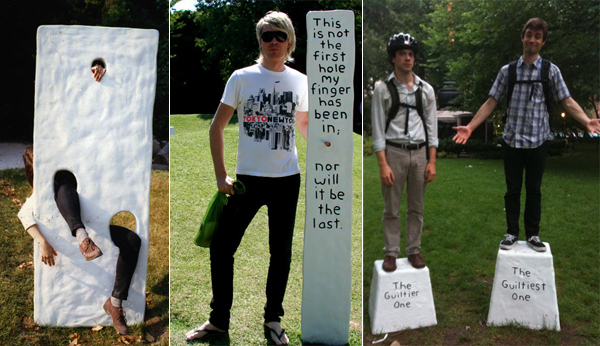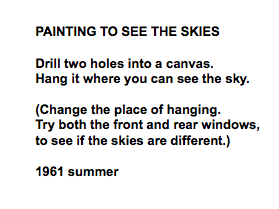"The fascination with analog media . . . Today, films soft warmth feels intimate compared with the cold, hard digital image, with its excess of visual information"
I have experienced both the analog and the digital, particularly in the realm of photography. Each has its merits. Traditional film photography indeed has a warmth and life to it that digital photography lacks. Each step of the photographic process requires direct interaction with the image you as a photographer are creating. You load film into the camera, giving it life, and with each click the film moves through the camera. You get to roll the film onto a reel knowing that one mistake can make or break your negatives. That possibility of human error that can be seen in the product gives analog photography a uniqueness that digital photography lacks. There is a tension in the possibility of failure, and a pride and sense of ability when you do it right. The most magical part of film photography is the development of the image itself. When the paper goes into the devo and just appears in indescribable. Digital imagery lacks that sense of wonder. The images that you are capable of rendering through digital media are truly incredible, but there is no error. With Photoshop every aspect of the photo is fixable, adaptable, and changeable. This does, however, give an artist more control and allow them to manipulate photos in ways that aren’t merely beautiful, but can convey a concept in a very specific manner. I think that digital mediums have complimented the evolution in the art world from traditional aesthetic goals into the realm of conceptual work and the exploration of what art is and how it can be used.
The article also speculates that 'at its most utopian, the digital revolution opens up a new dematerialized, deauthored, and unmarketable reality of collective culture; at its worst, it signals the impending obsolescence of visual art itself'
Because of the magical warmth of analog mediums I do not think they will ever become obsolete. They may be translated into the digital world because of its convenience, but I believe artists will continue to make physical works and people will continue to enjoy and desire those works. Our eyes and our minds need a break from technology every now and then. I think analog work in some ways is better for the soul.
Miranda July creates sculptures that beg for viewer interaction. They are pedestals with inscriptions, but lacking a subject, or objects with empty holes needing to be filled. As Huhtamo discusses in his article on interactive art, the artwork relies on viewer interaction to complete the piece. The outcome is always unique because variables such as the participant's gender or height can change the way the piece looks or the meaning it coveys. July's artwork holds true to Huhtamo's definition of interactive art because it is not passive interaction. People have to actually get up, touch, and really engage with the artwork to make it whole.

In his article, Manovich discusses the idea of database art and its struggle with narrative art. Pharrell Williams tackles this issue brilliantly with his work "24 Hours of Happy." He has created a database of video footage that is then indexed based on the time of day that it was filmed at. Viewers can browse the video based on time of the day or night. For each time there are different versions of the video. The cyclical nature of the film creates a narrative through time even though the videos and subjects are not creating a cohesive story. The website is just like Manovich describes, "a number of database records linked together so that more than one trajectory is possible," but at the same time the time aspect creates a simple narrative of people being happy throughout the day.Check out the site here:
24 Hours of Happy
Casey Raes' article considers instructional forms of art and the impact of digital technology on conceptual work. One of the important aspects of instructional art is its openness to interpretation. Though there are specific rules for the creation of a piece it still varies because of the subjective interpretation by each person who enacts the piece. Yoko Ono's instruction paintings were some of the earlier pieces to follow this movement in the art world. One of the instruction paintings says:

The instructions are easy to follow, but each person who participates will do it differently. The holes might be different sizes and everyone will be looking at a different sky. It could be a different time of day or a different environment that effects what they see. Though everyone follows the same set of rules, there is the opportunity for variety through Yoko Ono's instruction pieces.
I found Gustav Metzger's manifesto on auto-destructive art very interesting because of how contradicting it seems. The manifest states, "Auto-destructive art is the art of change, growth, movement." This concept made me think of Urobors, the image of a snake eating its own tail. This represents a cyclical nature and something that is destroyed even as it is created. Metzger's artworks cannot exist without the action of destruction, but they are destroyed through their own creation. It's really quite poetic. It seems contradictory, however, to state that auto-destructive art represents change and growth when it is destructive by nature. Annihilation does not seem like growth to me, but I suppose that if you take everything away so that there is nothing left something will have to grow in its place.
I think one main idea from this writing is that men try to play God through their ability to destroy, but "God giveth and he taketh away" they say, so I think the giving is also important.
Braitenberg's writing is fascinating because of his ability to convey mechanical nature through human nature. He personifies each type of vehicle, making it easy to understand how they function by giving them feelings and personalities, but without losing the transmission of basic knowledge about devices. It is easy to understand how different sensors can be used to affect the behavior or "personality" of a motor-oporated do-hickey.
An idea that I found compelling within the article was how the laws of physics act upon every action and can affect the outcome of something that seems pre-determined. Just like the philosopher in Jurassic Park describes chaos theory by placing a drop of water on the lady's hand, friction can cause a vehicle to travel in an unpredictable path instead of a straight line because of "the sum of microscopic forces that arise." (5)
It is difficult to imagine that every person in the world is connected in some way or another, but it must be so. The "Random Universe" reading says that even the structure of molecules and crystals are networks created on a graph system, suggesting that graph networks are a fundamental structure of biology. It is natural for people to build networks and create societal structures. For me, this reading brought to mind the concept of the "butterfly effect." If we all really are connected so intricately, does one person's actions affect everyone else? Or affect at least one other person?
Another idea that I found interesting was the statement that "there are no islands of people completely isolated from society at large." (19) However, there have been a couple of cases in the news about tribes of people living in remote parts of the planet that have no knowledge of modern culture. Do they not defy this statement? With the rapid growth of population and the greed of society though, how long can such tribes exist outside of our larger network?
The "Six Degrees of Separation" reading centered around the idea that "we live in a small world." This statement is becoming more and more true through the internet and especially social media, which is essentially defined as a networking platform. Time and space are diminished, allowing us to be connected to people all over the globe without the necessity to travel or spend time waiting. It’s kind of scary. Page 31 of the text discusses the idea of connection through the web by looking at how many clicks it takes to get from one web page to another. A great practical example of this idea is the online "wiki game." Check it out
here
This reading also reminded me about the Buddhist concept of "Indra’s Net," the idea that everything in the world is connected to every other thing in the world. This idea is interesting because it is not limited to simply human societal constructs. It means that all things—plants, animals, insects, etc.—are linked together. It might be interesting to do a networking project under this criterion instead of limiting networks to the human species.
During this reading, I also realized that each day I encounter new people, but choose not to interact with them, thus limiting my links. If I were to introduce myself to one new person each day how much would my network change and grow? Would it actually make a difference in my daily life? Just because I meet someone doesn’t mean that the connection is permanent or deep. I think it is a good goal though. I would like to make a greater effort to make connections and expand my ties to the world around me.
Levy discusses how art has become a more open and collaborative process through the Internet. Modern technology has created more opportunities for people to see, participate in, and interpret artworks. Because of this art can have more than one author, but instead of making everyone an artist, it has the effect of make the art authorless. While creating artwork, a "collective imagination" is formed. This is an example of how art and cyberspace can create whole new networks of people.
The first statement that Artie Vierkant makes in his writing, "The Image Object Post-Internet," is that "art is a social object." (3) In the sense that art is meant to be shared and create social interactions, I disagree because though art is a means of communication through its ability to "pierce the enigmatic and emotional core within us," (Levy, 2) it can also be used for personal, therapeutic, or meditative purposes. The reading also mentions that art tends to echo cultural movements (Vierkant, 4). From an art historical perspective this is very true. Movements in art tend to arise from the influence of current events. I wonder though if art can create a cultural movement instead of reacting to one though.
idea that the web strips art of its originality because of the easy dissemination of artworks (9). As an artist I am a little concerned about putting my work online because it can easily be taken by someone else and reused or plagiarized. I myself often use components of other artworks that I have seen online, which makes me question whether or not I am even capable of making art originating entirely from myself.
The reading also brought to my attention how true it is that the internet and specifically social media has led to "the development of attention as currency" (5). I find this very true and applicable to myself as an artist because This is true because I feel validated and place a higher value on my artwork when I share it and it receives a lot of "likes" on Facebook. Other social media outlets also promote this system of evaluation. Youtube: the number of shares, Tweets: the number of likes or retweets, tublr: the number of reblogs. Our generation of artists tend to feel that if more and more people are sharing our work or liking it then it must be the greatest thing ever and therefore very valuable.

